3.4. Negative (and positive) impacts of jellyfish blooms on human activities
The risks involved in the increase of gelatinous plankton blooms are manifold, since these events affect humans in several ways. In general, jellyfish blooms are perceived negatively, but in some cases they might have positive impacts on human activities. The interactions of gelatinous plankton blooms and human activities of any kind involve:
3.4.1. Fisheries
During blooms, the gelatinous masses are so thick that they can clog fishing nets in no time, impairing their functioning (Fig. 23). The masses can become so heavy to destroy the gear and, in one case, the press reported that, in Japan, a vessel sank due to the weight of the jellyfish present in the net that it was pulling up (Fig. 24).
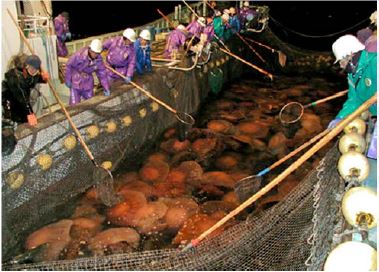
Figure 23. The nets of Japanese fishermen are often impaired by swarms of Neopilema nomurai.
Purcell et al. (2007) provide a long list of documented events of jellyfish negative impact on various fishing gear such as beach seine, seine net, set net, trawl, gill and dip nets, prawn trawls. The effects are invariably clogging and or fouling of nets. Besides impairing the functioning of the nets, jellyfish require laborious operation for their removal from gear and subsequent disposal.
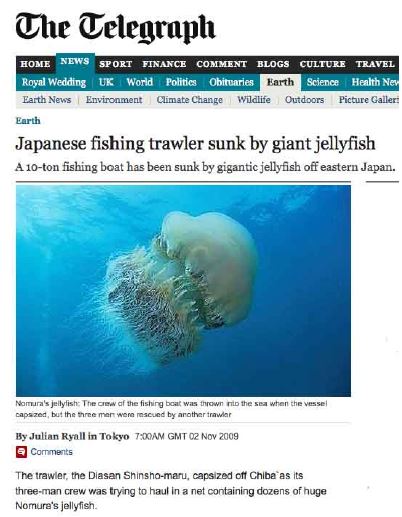
Figure 24. Press release on the sinking of a fishing vessel by giant jellyfish.
3.4.2. Public health
Fisheries can be affected also by indirect damage by predation, since many Cnidaria and Ctenophora species are recorded as predators of fish eggs, larvae, and juveniles. Predation is particularly intense during gelatinous plankton blooms, and fish recruitment can be impaired almost completely, so affecting fisheries due to failure of reproductive processes. Fisheries also suffer from indirect damage due to competition, since the predation of jellyfish on crustacean plankton (the main food source for juvenile fish) reduces the success of recruitment of fish due to shortage of resources for the early stages of their life cycles. The same can be true for herbivorous gelatinous macrozooplankton (i.e. the Thaliacea) which, depleting phytoplankton populations, decreases the food availability for crustacean plankton, presumably reducing its abundance, so affecting the feeding opportunities of its predators, namely the larvae and juveniles of fish.
In 2010, the first casualty due to the sting of a gelatinous plankter (Physalia physalis) occurred in Sardinia (Fig. 25). Besides this extreme event, hundreds of thousands of tourists are stung more or less severely by jellyfish, mainly by Pelagia noctiluca and under a lesser extent by other species such as the already mentioned Physalia physalis, the cubozoan Carybdea marsupialis etc. De Donno et al. (2009) made a survey along the Salento Peninsula and estimated the impact of jelly stings by analyzing the statistics of first aid stations on the shore. Purcell et al. (2007) made a bibliographic survey on cases of stings at a world level. The figures are appalling, ranging from 15 000 cases in Japan in 1961, to 45 000 cases of treatment along the French riviera in the
period 1984–1987, the peak of Pelagia years in the Mediterranean. More than 14 000 cases of treatment have been reported for the Mediterranean coast of Spain in August 2006. The reactions are of various kinds, depending on the species and on the sensitivity of the stung individual. The risk is not so high, in terms of extreme events, but it is anyway a nuisance and a sting can spoil a vacation.
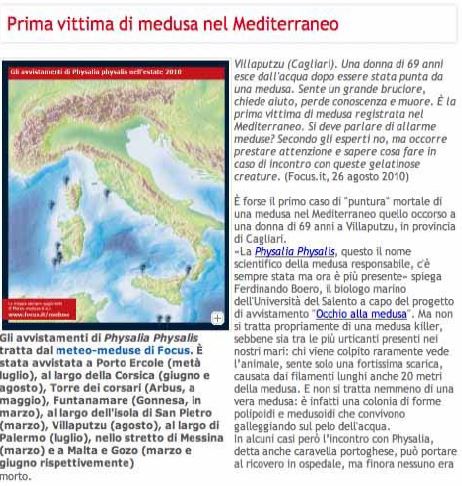
Figure 25. Report on the first case of lethal sting by a gelatinous plankter in the Mediterranean Sea. It occurred in Sardinia at the end of August 2010. The probable responsible was Physalia.
3.4.3. Tourism
Sea-based tourism is one of the main sources of income in the whole Mediterranean Sea. If stinging jellyfish persist, stung tourists can cancel their reservations or reduce the length of their stay, with a reduction of revenues from tourism.
Along some coasts, e.g. France and Spain, anti-jellyfish barriers have been put in operation, so as to defend portions of space just in front of beaches (Fig. 26). The efficacy of these systems is debatable, since the jellyfish can be mashed against the barriers, and be dispersed as a soup of stinging material right into the "protected" area. For especially noxious species (especially Physalia physalis, that floats on the sea surface) direct removal has been experimented, both from the sea and from the beaches, where these siphonophores easily strand, while retaining their stinging capabilities. Damages to tourism are regularly reported by the press, but evaluations of the economic damage are apparently not available.
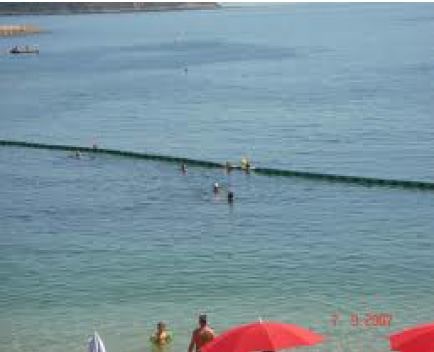
Figure 26. Jellyfish barrier to protect tourists from being stung.
3.4.4. Food market
The impairment of fish recruitment obviously impacts on the food market, due to low availability of fish. Furthermore, as remarked by Orsi Relini et al. (2010a), fish that eat medusae such as Pelagia are characterized by red perianal areas and nothing is known about the possible changes in their value as food. The negative issues, however, might be counterbalanced by positive ones, since jellyfish are an important fisheries yield in some parts of the world (Morikawa, 1984; Hsieh et al., 2001), due to their high value as delicacy food in some markets (Fig.
27). Kingsford et al. (2000), however, lament high variability in catches.
Dong et al. (2008), in fact, report about stock enhancement of edible fish populations in China. Rhopilema esculentum is a popular food in China and is the object of intensive aquaculture practices (You et al., 2007).

Figure 27. A jellyfish dish.
3.4.5. Cooling systems of factories
Power plants and other industries are often placed on the shores of water bodies and the Mediterranean is not an exception. In this way, industries take advantage of marine waters to cool their engines. The intaking pipes convey water into the cooling systems that can be clogged by jellyfish, sucked by the powerful pumps that suck water into the systems (Fig. 28). The presence of jellyfish forces the plant to stop functioning for the time of the cleaning of the pipes. Purcell et al. (2007) review reports of power stations affected by jellyfish blooms in Japan, Philippines, China, India, Baltic Sea, Gulf of Oman, Qatar, Arabian Gulf, USA.
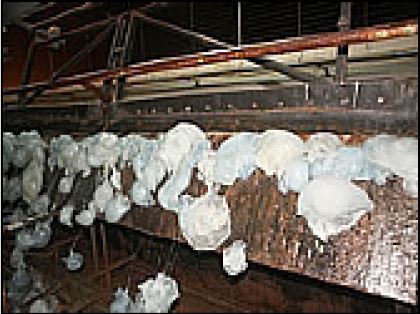
Figure 28. Jellyfish clogging the cooling system of a power plant.
3.4.6. Cage aquaculture
Adult fish are usually immune from gelatinous plankton impact, since they can swim faster than jellyfish and escape from them. If closed in a cage, however, fish cannot escape. It happened already, both in the North Sea and in the Mediterranean Sea, that swarms of Pelagia noctiluca have exterminated aquacultured specimens. The jellies are brought by the current towards the nets, and are then crushed through them, so that the water into the cages becomes a soup of stinging tentacles and manubria that enter the gills of the fish and eventually kill them. Baxter et al. (2011) studied the interaction of salmon with Aurelia aurita which, indeed, caused gill damage to the fish. Purcell et al. (2007) listed impacts on aquaculture, with cases of damage to bivalves, prawns, shrimp, salmons, trout, and fish in general.
3.4.7. Positive impact of gelatinous plankton
As already stressed, carnivorous gelatinous plankters presumably act as selective agents, removing weak individuals from the populations of the species they prey upon. Furthermore, since they prey on the most abundant food items, they reduce the numerousness of potential monopolizers, acting as keystone predators.
Some large jellyfish, such as Rhizostoma pulmo and Cotylorhiza tuberculata are often accompanied by juvenile fish of various species. This aspect is worth further investigation since these species might prove fish recruitment enhancers by providing benefits to fish juveniles in terms of protection and even of feeding opportunities.
Another positive impact of the presence of jellyfish might be linked to tourism (Dawson et al., 2001). Jellyfish, furthermore, are the main attraction in most marine aquaria since their beauty and elegance fascinate many people. Many artifacts are now inspired by jellyfish and there is a tendency to recognize them as beautiful animals. This tendency is not to be under evaluated. In the nineteenth century, and in the first half of the last century, whales were seen as monsters, as testified by Melville’s masterpiece “Moby Dick”. Nowadays, those who kill whales are seen as criminals, and whale watching is increasingly widespread, being a source of income at places where whales are regularly present. Of course, it is not advisable to enter in the water if there is a bloom of Pelagia or even if there are just a few specimens of Physalia, but the other jellyfish of the Mediterranean and the Black Sea are less stinging than these two dangerous stingers.
Jellyfish watching (Fig. 29) might become a tourist attraction, as it is at Palau (Dawson et al., 2001).
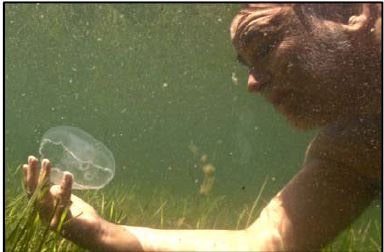
Figure 29. The author playing with Aurelia aurita in the Varano Lake, S. Italy (picture by Roberto Rinaldi, taken from the TV broadcast Linea Blu).
The information assembled and organized during the Jellywatch exercise of citizen science (see above) can be used also to make people aware of the properties of the various species, giving the opportunity to enjoy encounters with beautiful wild animals that are also among the very few ones that do not escape while we approach. Furthermore, cnidarians (especially sea anemones) also already used as food in some parts of the Mediterranean. Jellyfish are a delicacy in several oriental cuisines where they have a high commercial price. Jellyfish, furthermore, are the animals with the highest proportion of extracellular matrix in their bodies (the jelly) and the biotechnological opportunities that they offer are still largely unexplored. Piraino et al. (1996) carefully described the ontogeny reversal in the species Turritopsis dohrni, a rather exceptional phenomenon of cell transdifferentiation and redifferentiation leading to the metamorphosis of a jellyfish into a polyp (the preceding stage in the life cycle). Further research showed that this possibility is more widespread than previously thought (Piraino et al., 2004), with promising perspectives in the fields of aging and even in oncological research.
3.4.8. The species
The main species of gelatinous plankters occurring in the Mediterranean and Black Seas are figured in the CIESM Jellywatch poster, whose concepts have been developed by Ferdinando Boero with the aid of the pictorial artist Alberto Gennari and the graphic artist Fabio Tresca (Fig. 30). In the Appendix to this report, the species of major concern are listed in alphabetical order, with information about their main features.
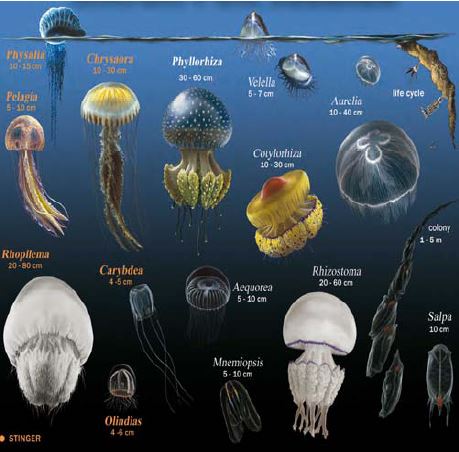
Figure 30. The main species of gelatinous plankton in the Mediterranean and Black Seas, from the CIESM Jellywatch poster.